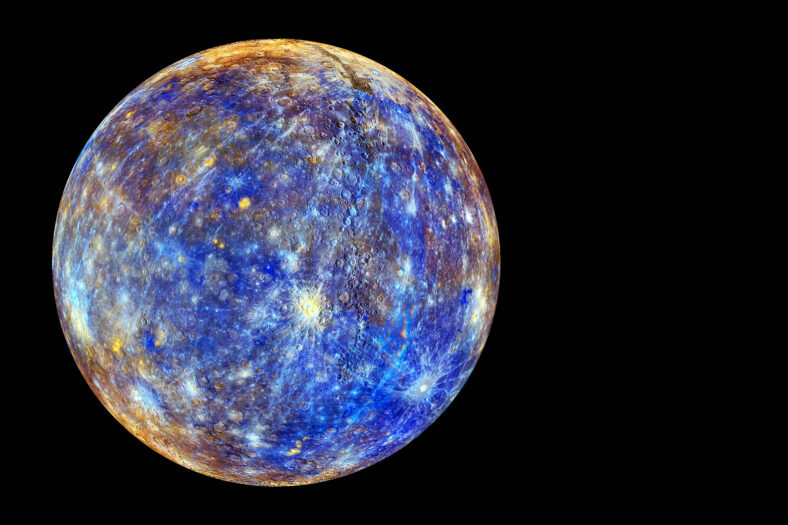Mercury Is Strange Due To A Collision It Experienced Early On

Mercury, the smallest planet in our solar system, has many features that have puzzled scientists for a long time. For instance, even though it is just slightly larger than Earth’s moon, Mercury is extremely dense.
It has a large iron-rich core that makes up approximately 60 percent of its mass, which is twice as much as other rocky planets like Earth, Venus, or Mars.
A new study has suggested that the formation of Mercury may have been caused by a grazing collision between two protoplanets that were of a similar size in the early solar system.
Adding to the mystery of Mercury’s unusual characteristics, data from NASA’s MESSENGER probe, which orbited Mercury between 2011 and 2015, showed that the surface of the planet is rich in volatile elements, such as sulfur, sodium, and potassium.
If the planet had experienced a massive impact in its youth, these elements should’ve been destroyed. One possible explanation for Mercury’s makeup is that the young planet collided with a significantly larger protoplanet.
But in the past, simulations modeling planet formation indicate that collisions among protoplanets of various sizes and masses are rare.
So, scientists looked into other explanations for how Mercury could have lost so much outer material while maintaining its volatile elements.
The new simulations demonstrate that Mercury’s makeup may be due to a more common cosmic event: a grazing collision with a protoplanet of a similar size.
“This kind of apparently ‘lucky shot’ would not have been unusual—and it might be exactly what created Mercury,” said Patrick Franco, the lead author of the study and a postdoctoral researcher in astrophysics at the Paris Institute of Planetary Physics.

Sign up for Chip Chick’s newsletter and get stories like this delivered to your inbox.
“Our work reinforces the idea that giant impacts are not just part of planet formation—they may actually be the primary drivers shaping the final structure of planets in the solar system,” said Franco.
The new simulations recreated Mercury’s chemical makeup and current internal structure through collisions between similarly sized protoplanets. The researchers also found that the angle of the collision determined how much mass was lost by the proto-Mercury.
When they tested certain impact angles, they discovered that young Mercury would have lost just the right amount of mass to match its current composition.
“What surprised us, at the end, was how effective this type of impact could be in explaining Mercury’s unusual structure without needing to consider multiple collisions or extremely rare conditions,” said Franco.
The collision would have had to happen relatively late in the planetary formation process. Mercury likely formed farther out and then later moved inward to avoid merging with the planetary body it collided with, eventually ending up in the orbit it is now.
The findings were posted to the preprint server arXiv.
More About:News